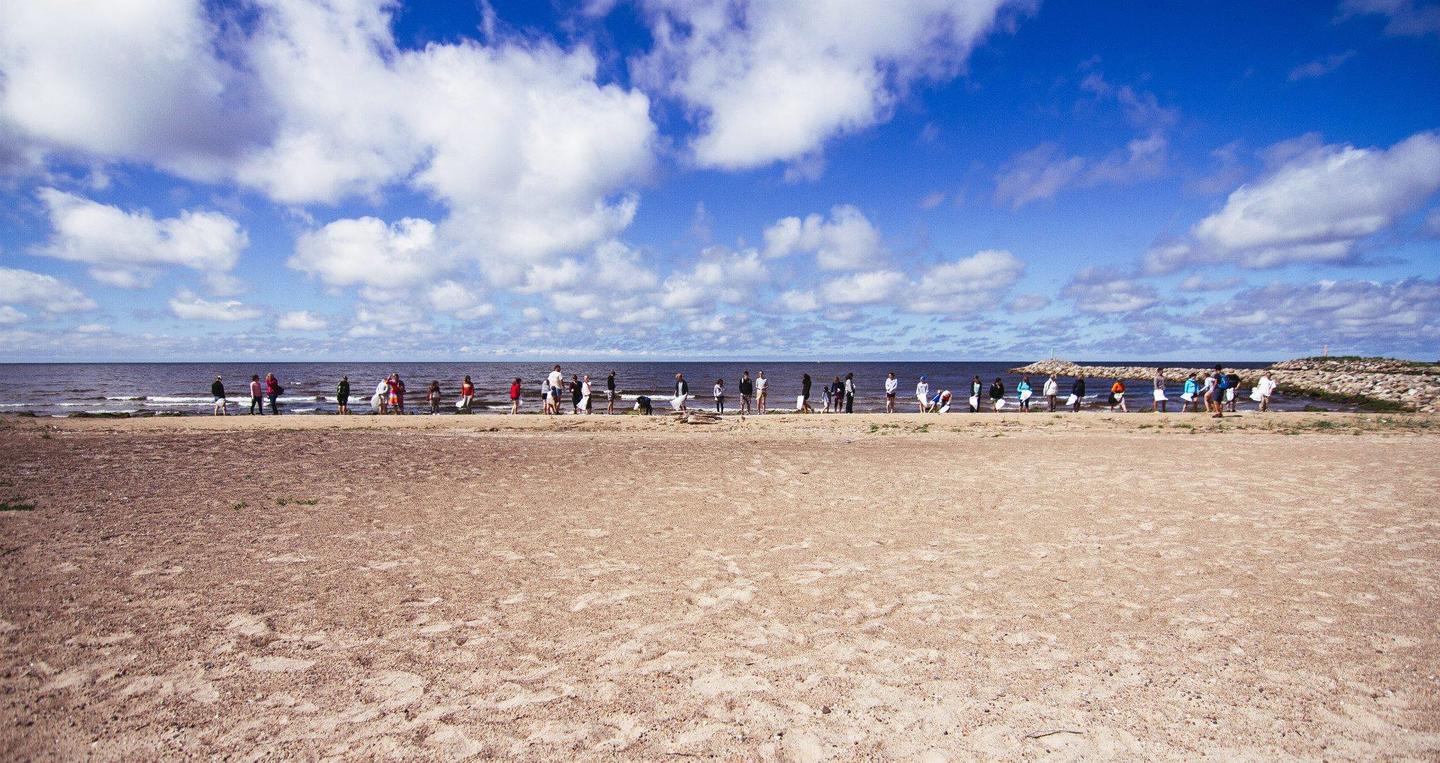The expedition started 26 May at the border between Latvia and Lithuania and reached the border with Estonia about one month later. Then 500 kilometre of the entire Latvian coastline was covered and beaches along the way cleaned for marine litter and waste.
The aim of the expedition “My Baltic Sea 2015” was to attract attention to the environmental challenges facing the Baltic Sea and raise awareness about the fact that the rehabilitation of the Baltic Sea depends on society’s attitude and understanding.
Along the way up the coastline, different activities such as lectures, concerts, outdoor cinema etc. were organised to increase people’s knowledge about the pollution and the marine environment.
In total, around 700 people took part in the expedition that was organised by the Foundation for Environmental Education in Latvia in cooperation with Latvian authorities and supported by the EEA and Norway Grants.
Collected marine litter and waste
Every day, the participants walked 15 to 20 kilometres along the coast. They collected marine litter and monitored waste on the beaches. The monitoring was conducted according to a methodology developed by the UN environment programme (UNEP). At each stop on the way, a 100 meter stretch of the beach was thoroughly inspected from the waterfront to the closest permanent vegetation or sand dune.
The expedition identified the cleanest and the most polluted beaches in Latvia, as well as the amount and type of waste found there.
Plastic waste dominated
The results show that more than half of all the waste (some places as much as 75 per cent) consisted of different plastic products such as rope, bags, cigarette butts, bottle caps and various plastic pieces. With some changes in attitude and efficient political measures this could be reduced.
All the waste that was collected will be presented for Latvia’s Minister of Environmental Protection and Regional Development.
The campaign “My Baltic Sea 2015” was organised in the framework of the Latvian presidency of the Council of the European Union.
Find out more about the campaign "My Baltic Sea 2015".
Improving the environmental status
Four beneficiary countries of the EEA and Norway Grants are bordering the Baltic Sea – Estonia, Latvia, Lithuania and Poland. Through the Grants Iceland, Liechtenstein and Norway finance several projects to improve the environmental status and management in this area.
Read more about ongoing environmental projects around the Baltic Sea.
